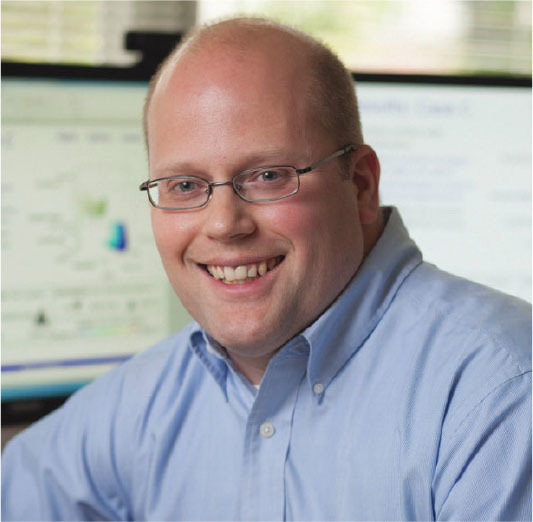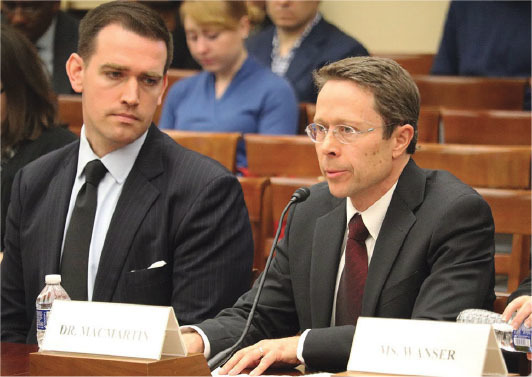
Scientists seek pathways to a tolerable climate future
By Sherrie Negrea
In the Pacific Ocean, small islands—even whole countries—could disappear as sea levels are expected to rise an additional four inches. Arctic summer sea ice will vanish at least once every 10 years. And nearly three times as many people as today will be exposed to deadly heat waves.
These are just a few of the climate impacts that would occur if global warming surpasses 1.5 degrees Celsius above pre-industrial levels and reaches 2 degrees by the end of the century. The difference that half degree makes was the focus of a landmark report issued last October by the United Nations’ Intergovernmental Panel on Climate Change (IPCC).
"To stay under 1.5, we would have to get to zero emissions by 2050," says Natalie Mahowald, one of the lead authors of the report and the Irving Porter Church Professor of Engineering in Earth and Atmospheric Sciences. "In order to do that, you would have to change behavior—we would have to substantially reduce driving, flying, buying things, and eat lower on the food chain to reduce your meat and dairy consumption."
But drastically reshaping behavior would be unlikely, Mahowald concedes, in a global economy that is spewing more than 40 billion tons of human-generated carbon dioxide emissions into the atmosphere a year. And with carbon dioxide having reached record levels, Mahowald and other climate scientists at Cornell believe limiting global warming to 1.5 degrees Celsius may be improbable.

Before the Paris Agreement was drafted in 2015 and called on countries to voluntarily reduce emissions, Mahowald thought an increase of 4.5 degrees Celsius—continuing "business-as-usual"—was the most likely level of warming by the end of the century. But since the Paris accord, the IPCC report, and dramatic reductions in the price of solar and wind energy, she is optimistic that we can keep warming to less than 3 degrees by the end of the century.
Another climate scientist at Cornell, Patrick Reed, the Joseph C. Ford Professor of Engineering in Civil and Environmental Engineering, agrees with her assessment and has shown that even limiting warming to 2 degrees Celsius, from the preindustrial era of 1850-1900, is quite ambitious and not likely, given current policies.
Either scenario, however, would lead to extreme climate impacts that will only worsen as global warming passes 1.5 degrees Celsius—as early as 2030, according to the IPCC report. With that date quickly approaching, climate scientists believe that immediate action needs to be taken to decarbonize the economy, from adopting wind and solar power to developing new technologies that can remove carbon from the atmosphere.
"We have a window of about 10 to 12 years of opportunity," Reed says. "The rate of action that we have to take and the scope of what we can get out of it are becoming very limited. So we’ve committed ourselves in essence to significant warming and significant vulnerability."
One study, millions of climate futures
Beyond carbon emissions, one critical factor that will determine how much global warming will occur is a variable that is beyond human control—the atmosphere’s sensitivity to greenhouse gas emissions.
To better predict the rate of global warming, Reed and a team of researchers developed a computational framework that analyzed 5.2 million possible climate futures based on different sources of uncertainty, such as population and economic growth. To keep global warming to less than 2 degrees by the end of the century—a goal most climate experts say is required for a "tolerable" future—carbon emissions would have to fall to zero by 2030 in every country in the world, according to their study published in March in the journal Nature Climate Change.

Reaching that goal, however, would depend on the climate’s sensitivity to greenhouse gases, that is, the rate of temperature change in relation to atmospheric emissions.
"If the climate sensitivity is low, then that gives us time," Reed says. "If it’s near the median estimated value, then it’s a coin flip for 2 degrees C, and it requires aggressive action immediately. If it’s high, then we’ve already committed ourselves to more than 2 degrees warming."
What is troubling for Reed is that the latest computer models rank the climate sensitivity as either median or higher, which means that the burden for controlling global warming to levels the international community considers safe will fall on changing human behavior.
In the United States, that is a challenging prospect because Americans don’t want to give up their lifestyle, which Reed says is more resource-intensive than anywhere else in the world. One study concluded that the carbon footprint of the average American is 16 metric tons of carbon dioxide-equivalent annually, more than triple the global average.
"Who wouldn’t want to live a luxurious lifestyle and have access to whatever food you want, whatever transport you want, air conditioning and health care," Reed says. "Now the question is: When is the turning point where we don’t get a choice?"
The geoengineering solution
One potential approach to lower global warming is a technology that is still in its infancy—solar geoengineering, which could lower temperatures by deploying aerosols in the stratosphere to reflect sunlight away from the planet.
While solar geoengineering has the potential to reduce global warming, the research has not advanced far enough to adequately understand the benefits and risks, says Doug MacMartin, senior research associate and senior lecturer in Mechanical and Aerospace Engineering. Another unanswered question is what impact would injecting large amounts of aerosols into the stratosphere have on human life, agriculture, and weather patterns.

"If we were to do solar geoengineering, it would affect every single person on the planet," MacMartin says. "But even though there are many concerns associated with these approaches, we have to do the research because solar geoengineering is probably the only method we have to stay below 1.5 C."
Last year, MacMartin launched a three-year study to assess the relationship between the timing of releasing aerosols into the stratosphere and its effect on climate impacts. The project is one of three funded by the National Science Foundation to investigate solar geoengineering as a potential solution for curbing global warming.
The strategy would involve flying airplanes at roughly 70,000 feet above the earth’s surface to release the aerosols into the atmosphere. If the particles reflected 1 percent of sunlight, that could cool the planet by about 1.5 degrees Celsius, MacMartin says.
The process would mimic a volcanic eruption, which shoots sulfates and other particles high into the atmosphere, and typically cools temperatures for a year. "There wouldn’t be too many unknown-unknowns because we can observe what happens with the volcanic eruptions that happen every now and then," MacMartin says.
One critical issue that would need to be resolved is how the international community would regulate and manage the injection of the aerosols into the stratosphere. Deploying aerosols to cool the planet would not likely be done by single countries but by a partnership of governments. An alternate approach would be to extract carbon dioxide from the atmosphere. However, the technology to sequester carbon dioxide from the atmosphere is still too costly to scale up, with current estimates at $100 per ton of emissions, according to MacMartin.
"Maybe we’ll discover a way to remove CO2 that is much cheaper, but right now we can’t guarantee that we can solve our problems with CO2 removal, at least not fast enough," he says.
Political considerations
Since the IPCC report shows that global warming will pass 1.5 C between 2030 and 2052, climate scientists believe it is urgent for government leaders to take significant action to reduce greenhouse emissions. President Trump has said he will pull out of the Paris Agreement, and when that decision takes effect on Nov. 4, 2020, the United States will be the only country to have abandoned the international accord.
"We’re taking a very large gamble in a closing window," Reed says. "I think the Trump administration’s behavior does not reflect every single person. It definitely doesn’t reflect individual cities and states that are acting differently."

Despite the administration’s attitude toward climate change, Mahowald remains optimistic because of the support Congressional members offered for taking strong action on global warming after she testified before the House Science, Space and Technology Committee last February. The attention the IPCC report generated in the media is another sign the public wants to embrace change, she says.
Beyond governmental action, Mahowald says the next generation needs to develop new technologies, and the private sector needs to finance them to devise workable solutions. "The students have a lot of energy to try to influence policymakers," she says. "But we need the innovation—we need students engaging in engineering and research innovation. Then we need the businesses to invest in this area because that’s who needs to find new ways to do things with much lower carbon."

